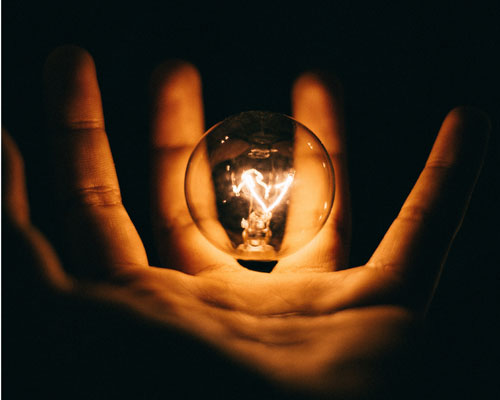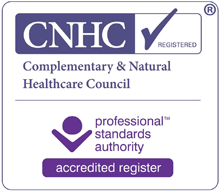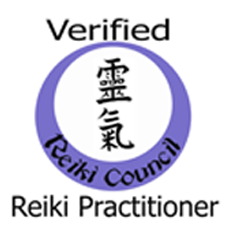REIKI SCIENCE

Reiki
Reiki is a well known healing art popular around the world. It is commonly seen as s spiritual art that is useful for both healing and spiritual development. Reiki is those things but Reiki is primarily a practical healing method supported by scientific research. There are studies that show the effectiveness of Reiki while treating different conditions and there are also studies that show how energy healing works in practise.Energy
Studies have found that energy healers produce an EM field1 (electromagnetic field), infra-red energy2,3 (heat) and biophoton4 (light) emissions from their hands when healing, which roughly translates as the tingling and heat that practitioners and clients feel when working with the Reiki energy. All living things produce an EM field from the heart, the brain and other internal current sources5, but energy healers are able to produce a more coherent EM field and can focus and direct this energy. It has been shown that electromagnetic energy stimulates repair and growth within the body. For example, energy at 7Hz stimulates bone growth and 10Hz stimulates ligament repair6. How EM fields actually assist in the healing process has been studied, and there are a number of theories posited for the mechanism of how EM field therapies work. The main process that I believe is through Signal Transduction Pathways.Signal Transduction Pathways
Signal transduction is the biological process by which cells convert one form of signalling into another, usually a biochemical reaction. With EM field therapies, the initial signal is electromagnetic and the response is a healing cascade. How this works at the cellular level is still theoretical at the moment, but it is believed the EM field affects the frequency of the charged ions' binding state. The charged ions spend time in a bound state at the cell wall and an unbound state free within the cell. The EM field seems to change the ratio of time spent bound to time spent unbound. It is this change of frequency that appears to initiate the cells healing cascade. It has been found that at precise frequencies this mechanism can trigger the healing cascade. This is how I believe Reiki works.References
1. Seto A, Kusaka C, Nakazato S et al 1992 Detection of extraordinary large biomagnetic field strength from human hands. Acupuncture and Electro-Therapeutics Research International Journal 17:75-94
2. Schwartz S A, DeMattei R J, Brame K G, Spottiswoode S J P 1990 Infrared spectra alteration in water proximate to the palms of therapeutic practitioners. Subtle Energies 1:43-72
3. Chien C-H, Tsuei J.J, Lee S C Huang Y-C, Wei Y-H 1991 Effect of emmited bioenergy on biomechanical functions of cells. American Journal of Chinese Medicine 19:285-293
4. Choi C., Hoo W.M., Lee M.B., Yang J.S., Soh K.-S., Yang J.S., Yoon G., Kim M., Zaslawsky C. and Chang J.J. 2002 Biophoton Emission from the Hands. Journal of the Korean Physical Society, August 2002 Vol. 41, No. 2, pp. 275_278
5. Liboff AR. 1994, The electromagnetic field as a biological variable. In: Frey AH (ed.) On the Nature of Electromagnetic Field Interactions. Austin: R.G. Landis.
6. Sisken B F, Walker J 1995: Therapeutic Aspects Of Electromagnetic Fields For Soft-Tissue Healing
Research Studies
Reiki Is Better Than Placebo and Has Broad Potential as a Complementary Health Therapy
This study reviews the available clinical studies of Reiki to determine whether there is evidence for Reiki providing more than just a placebo effect. The available English-language literature of Reiki was reviewed, specifically for peer-reviewed clinical studies with more than 20 participants in the Reiki treatment arm, controlling for a placebo effect. Of the 13 suitable studies, 8 demonstrated Reiki being more effective than placebo...https://www.ncbi.nlm.nih.gov/pmc/articles/PMC5871310
Long-term effects of energetic healing on symptoms of psychological depression and self-perceived stress.
The long-term effects of energetic healing were examined in an experimental design employing a 3 x 3 factorial MANOVA on symptoms of psychological depression and self-perceived stress as measured by the Beck Depression Inventory, Beck Hopelessness, and Perceived Stress scales. Forty-six participants were randomly assigned to 1 of 3 groups: hands-on Reiki, distance Reiki, or distance Reiki placebo, and remained blind to treatment condition...https://www.ncbi.nlm.nih.gov/pubmed/15154152
Effects of Reiki on Pain and Vital Signs When Applied to the Incision Area of the Body After Cesarean Section Surgery: A Single-Blinded, Randomized, Double-Controlled Study.
This study was conducted to determine the effects of Reiki on pain and vital signs when applied for 15 minutes to the incision area of the body after cesarean section surgery. The study was single-blinded, randomized, and double-controlled (Reiki, sham Reiki, and control groups). Forty-five patients, equalized by age and number of births, were randomly assigned to the Reiki, sham Reiki, and control groups...https://www.ncbi.nlm.nih.gov/pubmed/27763932
Effects of Reiki on Post-cesarean Delivery Pain, Anxiety, and Hemodynamic Parameters: A Randomized, Controlled Clinical Trial.
The aim of this study was to investigate the effect of Reiki on pain, anxiety, and hemodynamic parameters on postoperative days 1 and 2 in patients who had undergone cesarean delivery. The design of this study was a randomized, controlled clinical trial. The study took place between February and July 2011 in the Obstetrical Unit at Odemis Public Hospital in Izmir, Turkey. Ninety patients equalized by age and number of births were randomly assigned to either a Reiki group or a control group (a rest without treatment). Treatment applied to both groups in the first 24 and 48 hours after delivery for a total of 30 minutes to 10 identified regions of the body for 3 minutes each...https://www.ncbi.nlm.nih.gov/pubmed/26025798
Effects of Reiki on anxiety, depression, pain, and physiological factors in community-dwelling older adults.
The purpose of this study was to evaluate the effect of Reiki as an alternative and complementary approach to treating community-dwelling older adults who xperience pain, depression, and/or anxiety. Participants (N = 20) were randomly assigned to either an experimental or wait list control group. The pre- and posttest measures included the Hamilton Anxiety Scale, Geriatric Depression Scale-Short Form, Faces Pain Scale, and heart rate and blood pressure. The research design included an experimental component to examine changes in these measures and a descriptive component (semi-structured interview) to elicit information about the experience of having Reiki treatments...https://www.ncbi.nlm.nih.gov/pubmed/20635803
The effect of Reiki on work-related stress of the registered nurse
The Reiki Master Teacher group at a large academic, urban medical center studied the effects of Reiki on work-related stress in Registered Nurse Reiki I class participants. Research suggests that work-related stress is an influential factor in nursing burn out and retention...https://www.ncbi.nlm.nih.gov/pubmed/20699431

